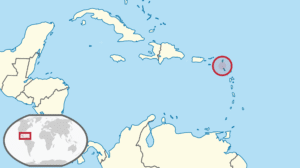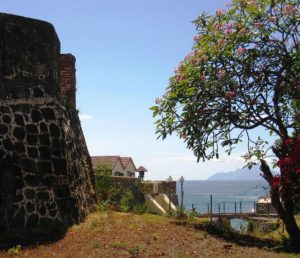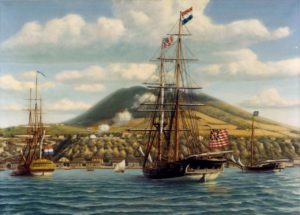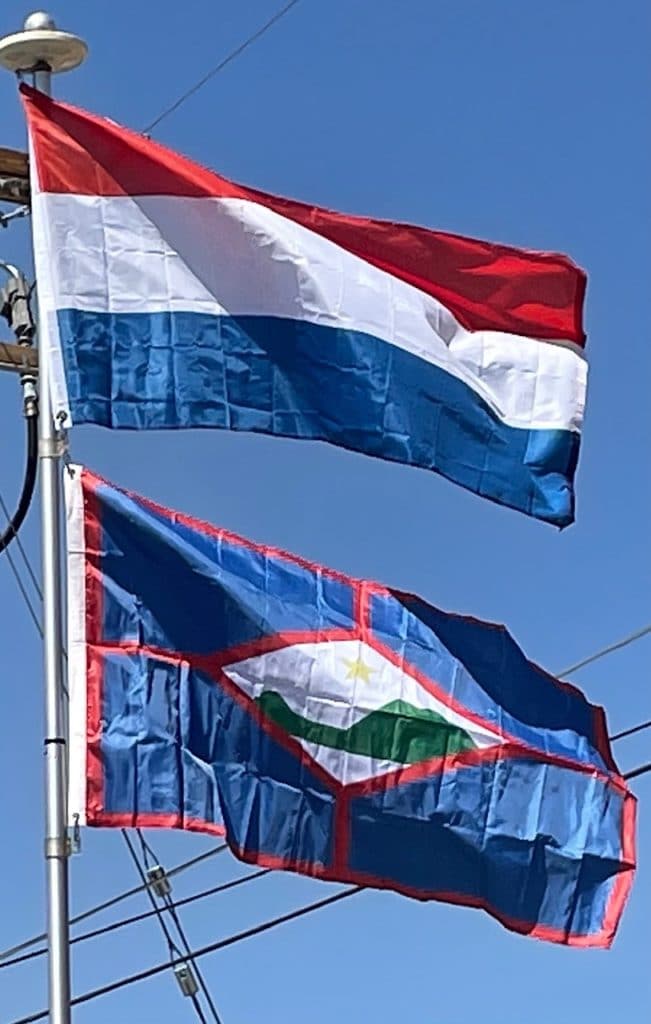Introduction:
Sint Eustatius is an island in the Caribbean. It is a special municipality (officially “public body”) of the Netherlands.
The island lies in the northern Leeward Islands portion of the West Indies, southeast of the Virgin Islands. Sint Eustatius is immediately to the northwest of Saint Kitts, and to the southeast of Saba. The regional capital is Oranjestad. The island has an area of 21 square kilometers (8.1 sq mi). Travelers to the island by air arrive through F. D. Roosevelt Airport. Formerly part of the Netherlands Antilles, Sint Eustatius became a special municipality of the Netherlands on 10 October 2010. Together with Bonaire and Saba it forms the BES islands.

The name of the island, “Sint Eustatius”, is the Dutch name for Saint Eustace (also spelled Eustachius or Eustathius), a legendary Christian martyr, known in Spanish as San Eustaquio and in Portuguese as Santo Eustáquio or Santo Eustácio.
History:
Early History:
It is unclear if the island was inhabited by native peoples prior to European colonisation. It is thought that the island was likely seen by Christopher Columbus in 1493.From the first European settlement, in the 17th century until the early 19th century, St. Eustatius changed hands twenty-one times between the Netherlands, Britain and France.
Slave Trade and Free Port:
In the 18th century, St. Eustatius’s geographical placement in the middle of Danish (Virgin Islands), British (Jamaica, St. Kitts, Barbados, Antigua), French (St. Domingue, Ste. Lucie, Martinique, Guadeloupe) and Spanish (Cuba, Santo Domingo, Puerto Rico) territories—its large harborage, neutrality and status from 1756 as a free port with no customs duties were all factors in it becoming a major point of trans-shipment of goods, and a locus for trade in contraband.

St. Eustatius’s economy flourished under the Dutch by ignoring the monopolistic trade restrictions of the British, French and Spanish islands; it became known as The Golden Rock.
“First Salute”:
The island sold arms and ammunition to anyone willing to pay, and it was therefore one of the few places from which the young United States could obtain military stores. The good relationship between St. Eustatius and the United States resulted in the noted “First Salute”.
On November 16, 1776, the 14-gun American brig Andrew Doria commanded by Captain Isaiah Robinson sailed, flying the Continental Colors of the fledgling United States, into the anchorage below St. Eustatius’ Fort Oranje. Robinson announced his arrival by firing a thirteen gun salute, one gun for each of the thirteen American colonies in rebellion against Britain. Governor Johannes de Graaff replied with an eleven-gun salute from the cannons of Fort Oranje (international protocol required two guns fewer to acknowledge a sovereign flag). It was the first international acknowledgment of American independence.

Nearly half of all American Revolutionary military supplies were obtained through St. Eustatius. Nearly all American communications to Europe first passed through the island. The trade between St. Eustatius and the United States was the main reason for the Fourth Anglo-Dutch War of 1780–1784.
Dissolution of the Netherlands Antilles:
Sint Eustatius became a member of the Netherlands Antilles when that grouping was created in 1954. Between 2000 and 2005 the member islands of the Netherlands Antilles voted on their future status. In a referendum on 8 April 2005, 77% of Sint Eustatius voters voted to remain within the Netherlands Antilles, compared to 21% who voted for closer ties with the Netherlands. None of the other islands voted to remain.
